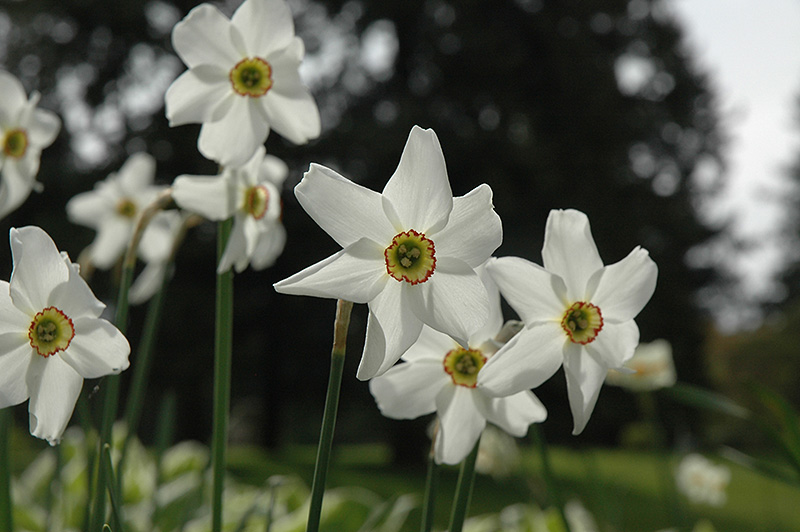Find Plants
Pheasant's Eye Daffodil*
Narcissus poeticus 'var. recurvus'
* This is a "special order" plant - contact store for details
Height: 12 inches
Spacing: 6 inches
Sunlight:
![]()
![]()
Hardiness Zone: 3
Other Names: Old Pheasant's Eye Daffodil
Description:
A gorgeous addition to any garden; recurved white petals with yellow cups finely edged in red, with a spicy fragrance; very showy in the garden or containers
Ornamental Features
Pheasant's Eye Daffodil has masses of beautiful fragrant white trumpet-shaped flowers with yellow throats and a red ring at the ends of the stems in mid spring, which are most effective when planted in groupings. The flowers are excellent for cutting. Its grassy leaves remain dark green in color throughout the season.
Landscape Attributes
Pheasant's Eye Daffodil is an herbaceous perennial with an upright spreading habit of growth. Its relatively fine texture sets it apart from other garden plants with less refined foliage.
This is a relatively low maintenance plant, and is best cleaned up in early spring before it resumes active growth for the season. Deer don't particularly care for this plant and will usually leave it alone in favor of tastier treats. It has no significant negative characteristics.
Pheasant's Eye Daffodil is recommended for the following landscape applications;
- Mass Planting
- General Garden Use
- Naturalizing And Woodland Gardens
Planting & Growing
Pheasant's Eye Daffodil will grow to be about 10 inches tall at maturity, with a spread of 12 inches. When grown in masses or used as a bedding plant, individual plants should be spaced approximately 6 inches apart. It grows at a medium rate, and under ideal conditions can be expected to live for approximately 10 years. As an herbaceous perennial, this plant will usually die back to the crown each winter, and will regrow from the base each spring. Be careful not to disturb the crown in late winter when it may not be readily seen! As this plant tends to go dormant in summer, it is best interplanted with late-season bloomers to hide the dying foliage.
This plant does best in full sun to partial shade. It does best in average to evenly moist conditions, but will not tolerate standing water. It is not particular as to soil type or pH. It is somewhat tolerant of urban pollution. Consider covering it with a thick layer of mulch in winter to protect it in exposed locations or colder microclimates. This is a selected variety of a species not originally from North America. It can be propagated by multiplication of the underground bulbs; however, as a cultivated variety, be aware that it may be subject to certain restrictions or prohibitions on propagation.
* This is a "special order" plant - contact store for details
Disclaimer - This Plant Finder tool is an online resource representing many of the varieties that we carry over the course of the season, and is intended for informational purposes only. Inventory varies seasonally, so we cannot guarantee that every plant will be in stock at all times - please contact the store directly for availability. It does not include our entire inventory of plants, so be sure to visit our store to see varieties that may not be represented on this list.

